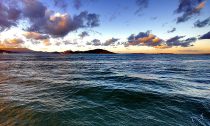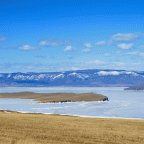2019 has been a year of climate disaster. Yet still our leaders procrastinate
December 20, 2019
Posted in News

2019 may go down in history as Year Zero of the climate apocalypse. The tsunami of extreme events has been so relentless that each is quickly forgotten in favour of its successor. So before the year ends we should pause, remember just how extraordinary it was, and reflect on what this might mean for our future. The year started with a record-breaking heatwave in southern Australia with temperatures in the mid-40s, in some areas for 40 days in a row. Then followed the immolation of vast areas of moist Tasmanian forests, forests that date back to the last ice age.
Approximately 3% of the state burned as a long-term trend of less rainfall and more evaporation was capped off by the driest January on record. On the mainland, who could forget those horrifying images of the Menindee fish kills?
To our north, Pabuk, the earliest forming tropical storm in the north-west Pacific Ocean on record, smashed into the coastal resorts of Thailand, killing 10 people and causing almost US$160m in damage.
While Australia was sweltering, North America was freezing thanks to a disruption of the polar vortex that might, perversely, be linked to the warming of Arctic waters.
February brought little climatic relief with Townsville hit by devastating floods and Sydney lashed by storms.
March saw fires continue to rage in Victoria, with over 30 homes lost. Meanwhile, Cyclone Idai, one of a record number of Indian Ocean cyclones, swept through south-eastern Africa, killing thousands in what some called the worst weather-related disaster ever to strike the southern hemisphere. Australia was not immune from cyclones, with Trevor and Veronica wreaking billions of dollars’ worth of damage.
Flooding in Iran claimed at least 70 lives in early April, while cyclones returned to south-eastern Africa, causing another 50 deaths.
In late April-early May Cyclone Fani lashed Sri Lanka, India, Bangladesh and Bhutan, causing 89 deaths, capping off a season of very atypical cyclones likely triggered by uncommonly warm seas.
In Hawaii, the Mauna Loa observatory recorded its highest-ever reading of carbon dioxide at 414.8 parts per million, confirming the relentless upward trend. The Guardian adopted a new editorial policy to prefer the term “climate crisis”. Inspired by a determined teenager from Sweden, hundreds of thousands of students from thousands of towns in hundreds of countries protested for the future of their planet.
June saw weeks of rain drown the midwest United States, on top of a near-record tornado season and the wettest 12 months on record.
Then hell came to Europe with a widespread heatwave that saw France record its highest ever temperature of 45.9C while climate scientists confirmed the link to climate change. In the US, a month of above-average temperatures baked Alaska and fuelled hundreds of fires.
As the tropical storm season started in the Gulf of Mexico in July, Louisiana and Mississippi braced for more floods. Across the Atlantic, Britain boiled while temperature records were also broken in Belgium, Germany and the Netherlands during the planet’s hottest month on record.
August saw record-low sea ice levels in the Arctic and, as August turned to September, Hurricane Dorian missed Mar-a-Lago but terrorised the Bahamas. There was scarcely time to take a breath before torrential rain submerged entire towns in south-east Spain and Imelda drowned Texas.
In response, millions of students once again took to the streets, as Scott Morrison chastised them for needless anxiety and Greta Thunberg “dared” world leaders to ignore them.
Rain towards the end of September brought some relief for the devastating fires in the Amazon, and Noaa confirmed the month as the hottest September on record.
October saw the fires move north to California, as Europe continued to swelter, parts of Australia choked on dust, and Japan was pounded by the costliest Pacific typhoon in recorded history.
In November, a Venetian council rejected action on climate change only to have its council chambers flooded by record high tides, Cyclone Bulbul displaced millions in Bangladesh and India, and heavy rain triggered deadly flooding across central and eastern Africa.
In a terrifyingly symbolic bookend to another year of record temperatures, Australia is once again on fire and the country and sweltering through a record-breaking heatwave. Fires have been burning in the south-east for months, and all four southern mainland states have already experienced catastrophic fire weather. Smoke has choked our largest city for weeks. Like the Tasmanian fires that started the year, the lack of soil moisture means these fires are tearing through ecosystems that normally don’t burn. Small fires are conflating into megafires, resources are stretched, firefighters are exhausted, more than 750 homes have been lost and six people have already died. And still our “leaders” refuse to discuss climate change. According to the Bureau of Meteorology, Australia’s record for its hottest day has tumbled for the second day running, with maximum temperatures reaching an average of 41.9C on Wednesday.
The catalogue of climatic disasters that have unfolded this year is truly numbing. And a recently published letter by 11,000 scientists warns the climate emergency will only intensify. And yet despite all the scientific evidence, all the destruction, all the suffering, all the apocalyptic predictions, and all the strikes and marches, nothing happens. Global CO2 emissions continue to rise and the world leaders procrastinate.
Source
















Social Profiles